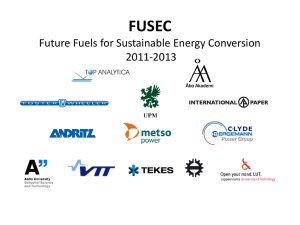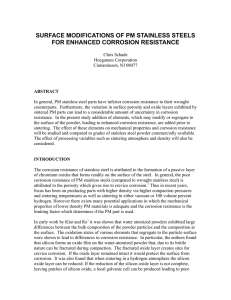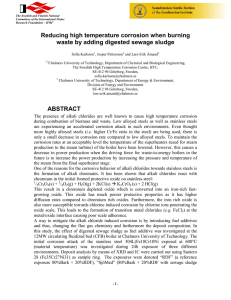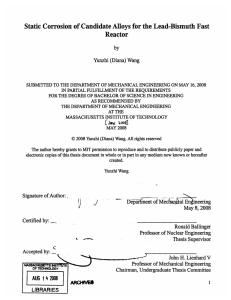Effects of Alkali Salts on the High Temperature
advertisement
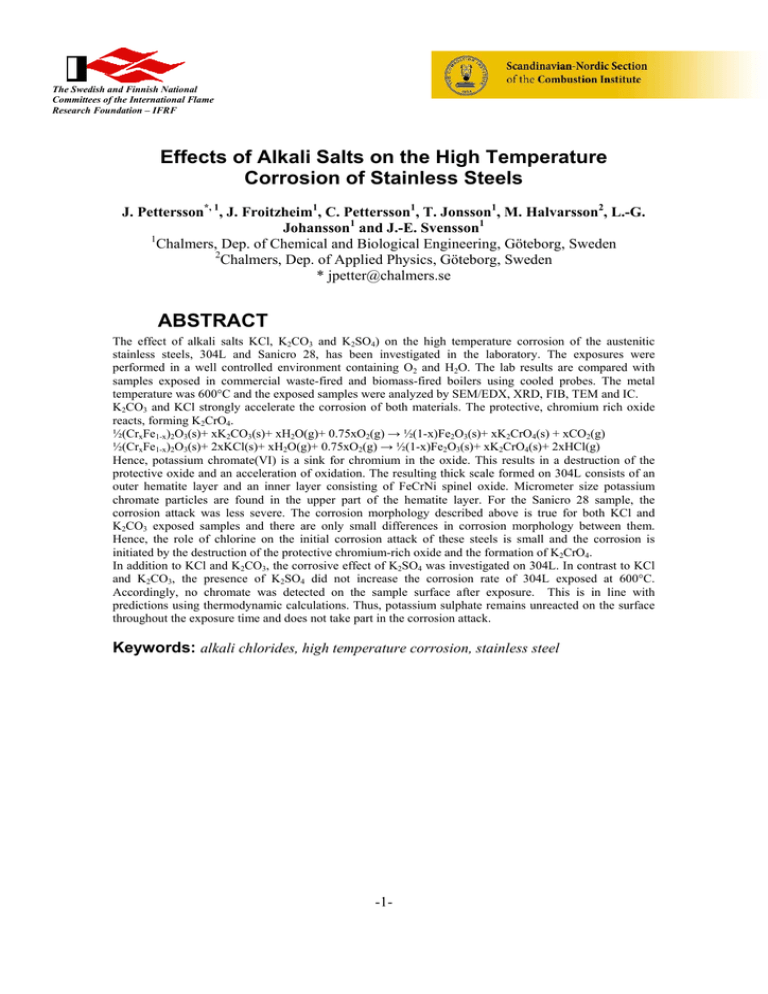
The Swedish and Finnish National Committees of the International Flame Research Foundation – IFRF Effects of Alkali Salts on the High Temperature Corrosion of Stainless Steels J. Pettersson*, 1, J. Froitzheim1, C. Pettersson1, T. Jonsson1, M. Halvarsson2, L.-G. Johansson1 and J.-E. Svensson1 1 Chalmers, Dep. of Chemical and Biological Engineering, Göteborg, Sweden 2 Chalmers, Dep. of Applied Physics, Göteborg, Sweden * jpetter@chalmers.se ABSTRACT The effect of alkali salts KCl, K2CO3 and K2SO4) on the high temperature corrosion of the austenitic stainless steels, 304L and Sanicro 28, has been investigated in the laboratory. The exposures were performed in a well controlled environment containing O2 and H2O. The lab results are compared with samples exposed in commercial waste-fired and biomass-fired boilers using cooled probes. The metal temperature was 600°C and the exposed samples were analyzed by SEM/EDX, XRD, FIB, TEM and IC. K2CO3 and KCl strongly accelerate the corrosion of both materials. The protective, chromium rich oxide reacts, forming K2CrO4. ½(CrxFe1-x)2O3(s)+ xK2CO3(s)+ xH2O(g)+ 0.75xO2(g) → ½(1-x)Fe2O3(s)+ xK2CrO4(s) + xCO2(g) ½(CrxFe1-x)2O3(s)+ 2xKCl(s)+ xH2O(g)+ 0.75xO2(g) → ½(1-x)Fe2O3(s)+ xK2CrO4(s)+ 2xHCl(g) Hence, potassium chromate(VI) is a sink for chromium in the oxide. This results in a destruction of the protective oxide and an acceleration of oxidation. The resulting thick scale formed on 304L consists of an outer hematite layer and an inner layer consisting of FeCrNi spinel oxide. Micrometer size potassium chromate particles are found in the upper part of the hematite layer. For the Sanicro 28 sample, the corrosion attack was less severe. The corrosion morphology described above is true for both KCl and K2CO3 exposed samples and there are only small differences in corrosion morphology between them. Hence, the role of chlorine on the initial corrosion attack of these steels is small and the corrosion is initiated by the destruction of the protective chromium-rich oxide and the formation of K2CrO4. In addition to KCl and K2CO3, the corrosive effect of K2SO4 was investigated on 304L. In contrast to KCl and K2CO3, the presence of K2SO4 did not increase the corrosion rate of 304L exposed at 600°C. Accordingly, no chromate was detected on the sample surface after exposure. This is in line with predictions using thermodynamic calculations. Thus, potassium sulphate remains unreacted on the surface throughout the exposure time and does not take part in the corrosion attack. Keywords: alkali chlorides, high temperature corrosion, stainless steel -1-






